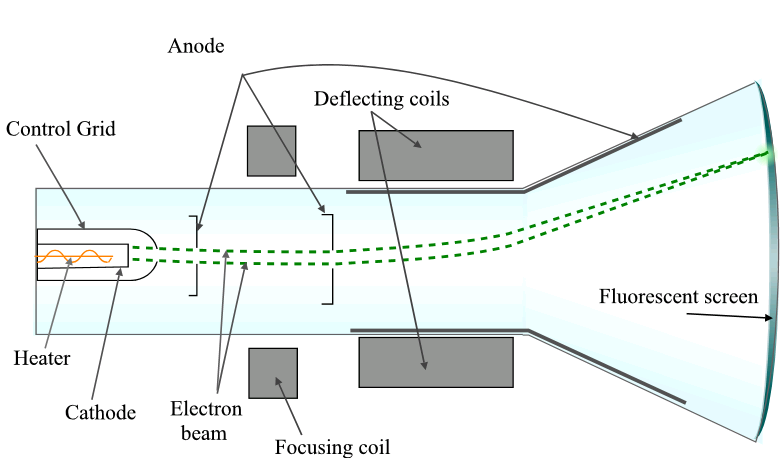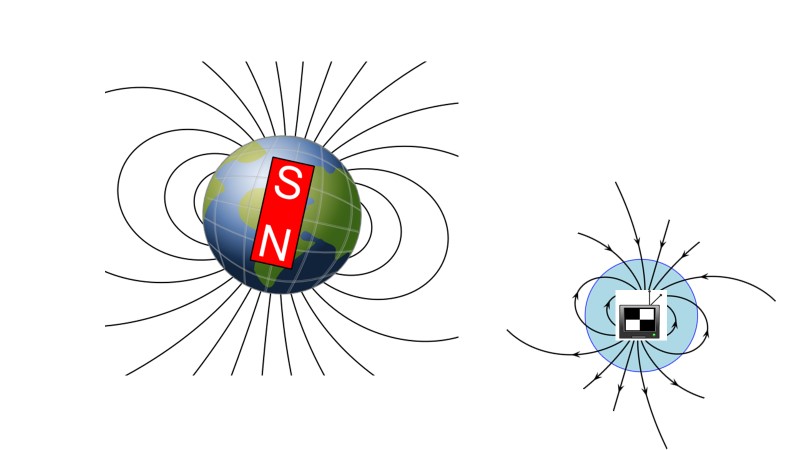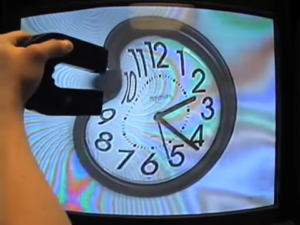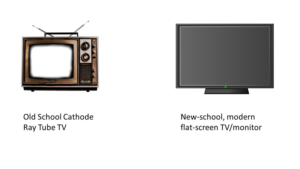This question popped into the Ask The Physicist’s inbox this week. Dear Ask the Physicists. In 1995, I might have ruined my best friend’s TV by waving a magnet on the screen. She was really upset. Was I really at fault. Could I have done something to fix it?
We are talking about 1995 here and we can confirm that that the TV in question was the old-school Cathode Ray Tube (CRT) TV. For the younger audience, these are the TVs anyone older than 30 might remember. They are easy to spot because they are deep and heavy and you certainly could not mount them on your wall. Modern flat screen TVs use a different technology.
The short answer to the question is yes, a strong magnet can definitely ruin a CRT TV in a potentially terminal way. The same goes for old computer monitors using the same technology. But should you wish to try it on an old TV, then you can make pretty colours dance across your screen. Strong magnets are usually not an issue for modern TVs that use different technology that we will get to later.
Figure 1. The old version TV that worked with CRTs and the modern TV that works with varied technologies (LED, LCD, etc), but there are no electrons and magnets directly involved in generating the picture.

Figure 2. A cathode ray tube. Note the magnets on the side that help guide the particles into an intense stream. The magnets also guide the electron stream to its target on the back of the TV.
The CRT and magnets.
To understand why magnets and the CRT TV are enemies we need to understand how the Cathode Ray Tube works. The CRT is made up of a glass chamber with the air sucked out to make a vacuum, the same as your old-fashioned tungsten filament light globes – another bit of technology that anyone older than 30 might remember. At the back of the CRT chamber, however, is an electron gun that fires electrons toward the back of your TV screen which has a phosphor coating that, when hit by electrons is energized and emits visible light used to make the picture on your TV screen. The vacuum is essential so the electrons can travel unhindered to the back of your TV screen. Without a vacuum the electrons would collide with air molecules or other particles and be deflected all over the place.
An electron is a charged particle. A magnetic field will affect charged particles. Magnets have poles. Opposing poles (North and South) will attract. The same poles will repel each other.
There are many CRTs in your TV or monitor. They are each aimed to deliver electrons to a precise spot on the back of your TV where they excite the phospor in the tiny spot on your TV that the electron hits. Magnets are used to guide the electrons to that precise (and tiny) spot. The excited phosphor molecules at that spot then emit light. All the CRTs working together generate the picture on your TV.
But if you shove a magnet on your TV screen this will interfere with the magnetic field guiding the electron and the travelling electron itself. The electron will be deflected off its intended path and not hit the correct spot on the back of the screen, distorting your image and the show you were trying to watch. It can look kinda cool though. Check out what sort or weird distortions can happen with this MIT demo below.
Turn it off and on again…
Turning the TV off and on again can sometimes reset everything, but it depends a bit on how powerful your magnet is and how much mucking around you did making weird colours on the screen. For instance, holding a reasonably strong magnet on the screen for too long can cause permanent damage. The resetting, if it works, occurs through a device called a degaussing coil that creates its own magnetic field to essentially erase the ones you created with your magnetic. You can learn more about it here.
Turn your TV upside down
The Earth’s magnetic field can also affect the picture. CRT TVs are designed to allow for the Earth’s magnetic field and will therefore only work the right way up. If you turn the TV upside down, however, the Earth’s magnetic field is passing through the TV the opposite way, which upsets the precise electron guidance mechanism noted above.

Figure 3. Note in the direction of the Earth’s magnetic fields in the right hand image. While this is a crude visualization, if you turn your TV upside down, the Earth’s magnetic field is entering from the opposite side.
More on shooting electrons
The old
Discovering the electron: It was back in 1897 that J. J Thompson used a similar device to the CRT to determine that there were things smaller than the atom and they had a negative charge – later called the electron. This was the first definitive proof of a sub-atomic particle. We have written about it in FLEET Schools here
And the new
Remember how the CRT has an electron gun and the CRT’s guiding magnets and your mischievous magnet could affect the path of electrons. In a similar fashion, the Australian Synchrotron uses electron guns to shoot electrons into a giant tubular ring where powerful magnets in the synchrotron deflect and guide the electrons around the ring and push the electrons up to speeds of almost the speed of light (about 299,792 kilometres a second). The deflection of the electrons off the magnets at this speed produces intense beams of electromagnetic radiation, or light, that scientists use to learn about the structure and function of everything from cells and novel metals to chocolate (to make chocolate even more delicious and mouth-melty).
And modern TVs?
Without going into too much detail, modern TVs don’t use electron guns and magnets to guide them. For example, LED TV use individual LEDs to switch on and off to construct a picture. Try stick a magnet next to a circuit powering an LED. Nothing will happen.


